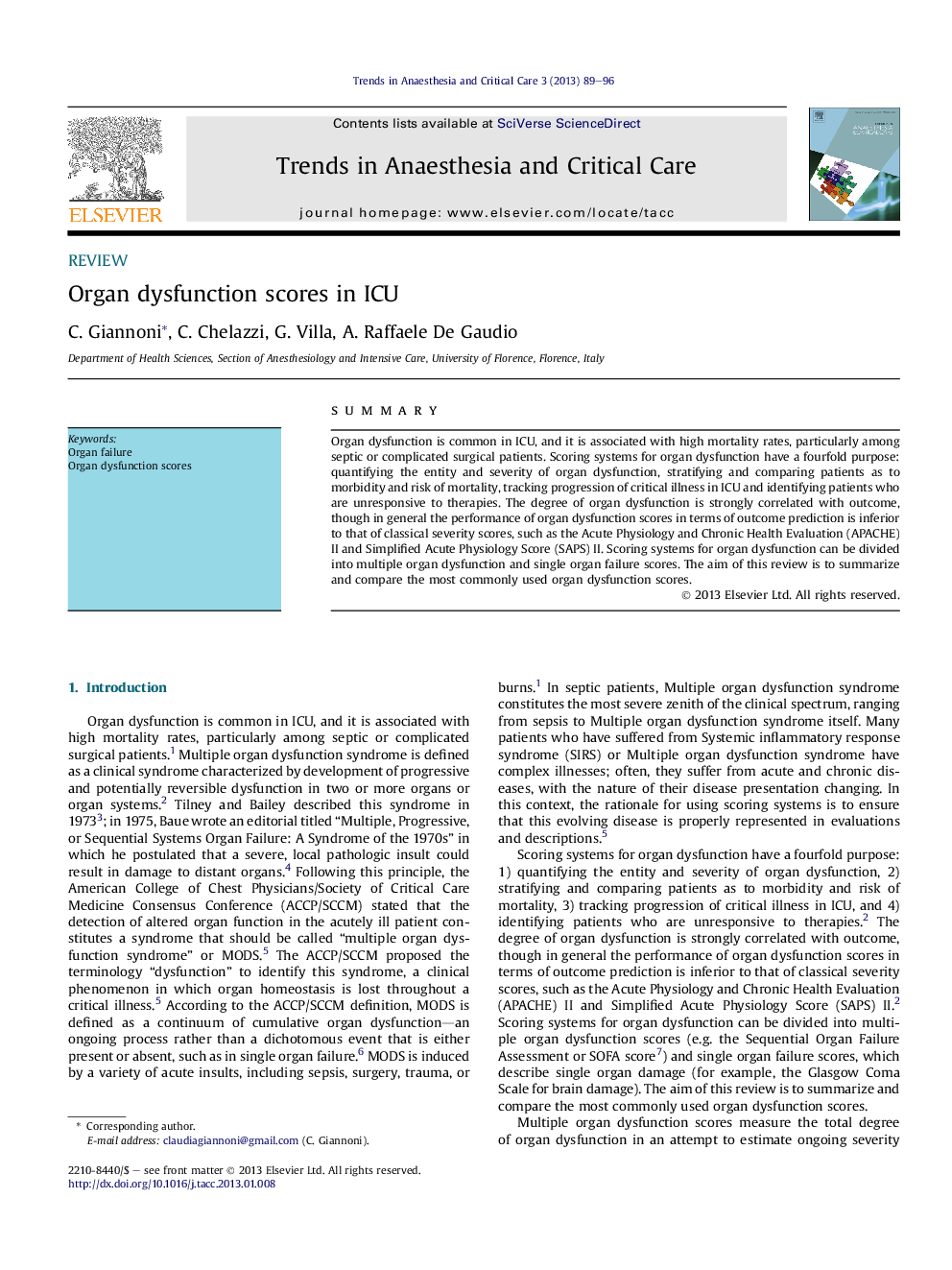| Article ID | Journal | Published Year | Pages | File Type |
|---|---|---|---|---|
| 2772791 | Trends in Anaesthesia and Critical Care | 2013 | 8 Pages |
SummaryOrgan dysfunction is common in ICU, and it is associated with high mortality rates, particularly among septic or complicated surgical patients. Scoring systems for organ dysfunction have a fourfold purpose: quantifying the entity and severity of organ dysfunction, stratifying and comparing patients as to morbidity and risk of mortality, tracking progression of critical illness in ICU and identifying patients who are unresponsive to therapies. The degree of organ dysfunction is strongly correlated with outcome, though in general the performance of organ dysfunction scores in terms of outcome prediction is inferior to that of classical severity scores, such as the Acute Physiology and Chronic Health Evaluation (APACHE) II and Simplified Acute Physiology Score (SAPS) II. Scoring systems for organ dysfunction can be divided into multiple organ dysfunction and single organ failure scores. The aim of this review is to summarize and compare the most commonly used organ dysfunction scores.
